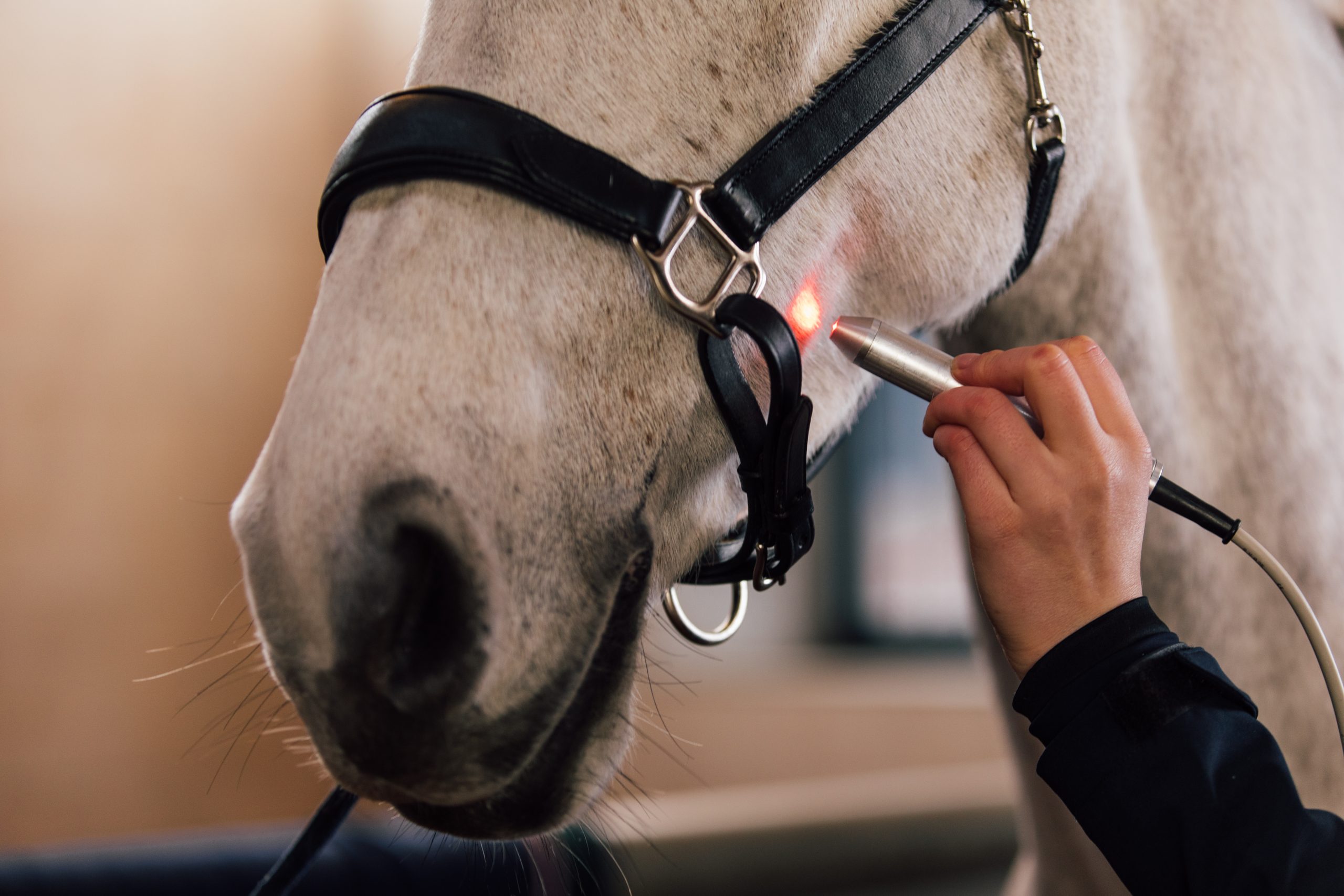Equine Therapy Programs: Transforming Lives One Ride at once
Equine Therapy Programs: Transforming Lives One Ride at once
Blog Article
Evaluating the Effectiveness of Laser Therapy in Horse Therapy for Injury Recovery
The analysis of laser treatment's performance in equine injury rehab rests on several elements, consisting of healing time, pain mitigation, and cells regrowth. Medical studies suggest remarkable improvements in problems like tendonitis and osteo arthritis, credited to enhanced mobile function and raised ATP manufacturing. Veterinarians regularly observe exceptional outcomes with laser treatment compared to conventional techniques, positioning it as a crucial aspect in equine treatment. The need for continuous surveillance and tailored treatment strategies can not be overstated. What specific scientific proof sustains these claims, and just how do veterinarians apply these procedures in method?

Recognizing Laser Treatment
Laser therapy has actually ended up being an essential device in veterinary medication, particularly in the treatment of equine problems. Known for its non-invasive nature and efficiency, laser treatment includes the application of certain wavelengths of light to boost cells repair service and lower swelling. This therapeutic modality is increasingly preferred for its capability to increase the healing procedure in horses experiencing a range of musculoskeletal injuries and persistent problems.
The primary device behind laser therapy is its ability to enhance mobile features. Furthermore, laser treatment advertises vasodilation, improving blood circulation and oxygen shipment to damaged cells, thus quickening recuperation.
In equine medicine, laser treatment is specifically valuable for problems such as tendonitis, osteo arthritis, and wound healing. The method is admired for its pain-relieving residential properties, enabling steeds to restore flexibility and function much more swiftly. Vets also appreciate its very little side effects compared to various other treatment modalities, making it a trusted and risk-free alternative for equine care.
How Laser Treatment Works
To recognize exactly how laser therapy works, it is necessary to delve into the communication in between light power and organic tissues. Laser treatment, also known as Low-Level Laser Treatment (LLLT) or photobiomodulation, utilizes particular wavelengths of light to penetrate cells and promote cellular procedures. The system hinges on the absorption of photons by cell chromophores, largely within the mitochondria, which are crucial for energy manufacturing.
Upon absorption, these photons trigger a series of biochemical changes, boosting mitochondrial feature and causing enhanced adenosine triphosphate (ATP) production. This increase in ATP speeds up mobile metabolic process, advertising cells fixing and regrowth. In addition, laser treatment regulates inflammatory responses by influencing cytokine levels and reducing oxidative tension, thereby easing pain and swelling.
Another considerable aspect of laser therapy is its function in boosting microcirculation. The treatment promotes vasodilation, boosting blood circulation and oxygen shipment to broken cells. This assists in the removal of cellular particles and supports the proliferation of fibroblasts and collagen synthesis, important for wound recovery.
Scientific Evidence
The effectiveness of laser treatment in equine treatment has been validated with different professional researches, showcasing its healing potential across a range of problems. A research conducted by Turner et al. (2012) showed that steeds treated with low-level laser therapy (LLLT) for tendon injuries displayed increased healing contrasted to those receiving traditional therapies.
Likewise, study by Johnson and colleagues (2015) concentrated on equine muscle injuries, exposing that laser therapy substantially accelerated muscle mass fiber regrowth and reduced muscle mass stiffness. Professional analyses have revealed that laser treatment can alleviate persistent conditions such as osteo arthritis.
Veterinarian Insights
Vet professionals have actually progressively recognized the value of laser treatment in equine treatment, citing both empirical proof and firsthand experience. Dr. Jane Smith, a leading equine veterinarian, keeps in mind that laser therapy has actually revealed exceptional effectiveness in reducing inflammation and try here increasing tissue repair work. "In my practice, I have actually observed quicker Website recuperation times in steeds treated with laser therapy contrasted to conventional techniques," she specifies. This belief is resembled by Dr. John Doe, that highlights that laser therapy uses a non-invasive choice with marginal side results, making it specifically suited for equine clients.
Vets additionally value the flexibility of laser therapy. She points out that laser therapy can be customized to the certain needs of each equine, making certain ideal results.

Practical Considerations
An essential aspect of implementing laser treatment in equine therapy includes recognizing the functional factors to consider that guarantee its effectiveness and safety. Firstly, it is critical to choose the appropriate laser gadget, as different types vary in wavelength, power, and infiltration depth. Vets should be skilled in these specifications to customize therapy procedures efficiently to every injury kind
Moreover, the frequency and period of laser therapy sessions require careful planning to maximize therapeutic benefits while lessening any kind of potential damaging results. Constant surveillance of the steed's response to treatment can lead required modifications in the therapy program. Developing a risk-free and controlled atmosphere during treatments is likewise vital to prevent unexpected exposure to laser exhausts, which might hurt both the steed and the handler.
Training and qualification of employees carrying out laser treatment are extremely important to ensure proper strategy and read review to promote security standards. Furthermore, maintaining precise records of each session, consisting of laser setups and observed end results, is important for reviewing the general effectiveness of the treatment and for making data-driven decisions.
Verdict
Laser treatment has actually emerged as an effective technique in equine injury rehabilitation, offering considerable advantages in healing time, pain relief, and cells recovery. For optimum outcomes, continuous tracking and personalized treatment methods remain necessary in leveraging the complete possibility of laser treatment in equine care.
Report this page